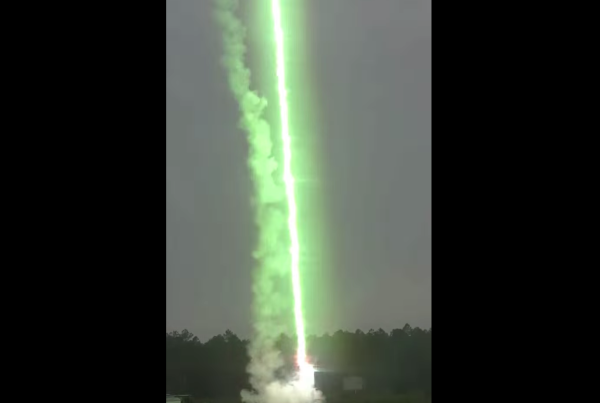This story originally appeared on Houston Public Media.
If you lived in Houston in the 1980s, you might have noticed that something has changed about the air you breathe: back then, it was a lot dirtier. But whether it needs to be “cleaner” than it is today is at the heart of debate heating up as new federal regulations are being written.
In the past several decades, the air in Houston and other big cities has improved dramatically. One reason is that car engines emit far less pollution. And the same can be said for big industries.
In fact, 25 years ago new air pollution rules, signed into law by the first President Bush, made industries spend billions to reduce their toxic emissions. And nowhere might that have had a bigger impact that in Houston with one of the largest concentrations of oil refineries and chemical plants in the nation.
“The emission of all those pollutants have gone down over the two decades that we analyzed,” says Larry Darcey, president of Sage Environmental Consulting. He spoke with News 88.7 in his office in League City.
“Our data showed about a 61 percent decrease,” Darcey said, summarizing a report his company did for the American Fuel and Petrochemical Manufacturers.
The report says that in the past two decades, the amount of air pollution released by refineries has plummeted nationwide.
”If we were to do this same analysis for just Houston-Galveston, it would probably show an even higher decrease in emissions as compared to nationally,” says Darcey, attributing the difference to what he says is regulation by Texas Commission on Environmental Quality.
Nationwide, Darcey says there’s no doubt the reason refineries pollute less now is because the federal government imposed those stricter regulations. But now, the U.S. EPA wants the industry to do even more.
By this fall the agency is expected to release new tougher standards for ozone, the asthma-inducing gas that forms when pollution from industries and cars reacts to sunlight. Houston doesn’t even meet the old ozone standard; it’s a non-attainment city in EPA jargon.
Darcy says trying to meet the new standard could be a serious blow to the current expansion underway at refineries and chemical plants along the Gulf Coast.
“It’s really going to weigh down the growth of industry. Because under non-attainment programs, there can be no increase in emissions,” Darcey says.
But there’s a good reason emissions should be reduced even further, say environmentalists.
“Harris County still ranks number one in the United States for the total quantity of these toxic chemicals or these hazardous air pollutants,” said Neil Carman, a former state regulator is now with the Texas chapter of the Sierra Club.
Carman admits that Houston’s air is a lot cleaner than it once was.
“The good news is the air is getting better. But if you talk to people who live in these neighborhoods around these big refineries, they still don’t have clean air,” Carman says.
Yudith Nieto is one of those people.
“We have been in this community for over 20 years my family and I,” Nieto told the audience at a public meeting held in East Houston. Construction crews are working on a refinery that towers above her neighborhood.
“We’ve experienced firsthand how the community has been impacted by the refineries and how the refineries and industry keep expanding without allowing us to have input in that expansion,” Nieto says.
One of their concerns, as they watch those refineries grow, is pollution from something they’ve seen for years: the giant orange flames called “flares” that plants use to burn off excess chemicals.
The EPA says it found that flares were emitting as much as four times more smog-causing pollution than previously thought.
We asked Larry Darcey, the industry consultant, if findings like that mean that it’s tough to say exactly how much pollution refineries are emitting.
“That would be a fair criticism. I think EPA and the refining sector have realized that there may be some sources of emissions that weren’t accounted for at the level of detail they needed to have been,” Larry Darcey says.
Both the EPA and industry say they’re working to improve the accuracy of monitors so there’ll be better data on how much pollution refineries are adding to our air.
Last week, Texas Attorney General Ken Paxton said his office was going to “challenge” some of the new, federal pollution rules related to power plants.















